Microstructural Characteristics and Properties of Laser-Welded Diamond Saw Blade with 30CrMo Steel
Abstract
:1. Introduction
2. Materials and Methods
2.1. Preparation of Experimental Sample
2.2. Material Characterization
3. Results and Discussions
3.1. Effect of Laser Power on Weld Formation and Tooth-Pulling Strength
3.2. Effect of Welding Speed on Weld Formation and Tooth-Pulling Strength
3.3. Microstructural Analysis
3.4. Phase Composition Analysis
3.5. EBSD Analysis
3.6. Microhardness Distribution
3.7. Analysis of Fracture Morphology
4. Conclusions
- (1)
- The laser-welded diamond saw blades with a tooth-pulling strength reaching as high as 819 MPa are obtained at the optimized welding parameters with a laser power of 1600 W and a welding speed of 1400 mm/min. However, during the process of laser welding, it is essential to carefully adjust the heat input. Too low a heat input may result in incomplete penetration defects, while excessively higher heat input could lead to issues such as spattering, splashing, porosity, and cracks.
- (2)
- The cross-sectional morphology of laser-welded diamond saw blades can be divided into the transition layer of the base material, the welding zone (including Cu-rich and Fe-rich regions), the matrix heat-affected zones, and the base material zones. In the welding zone, due to multiple segregations of Fe and Cu under supercooling conditions, spherical or dendritic iron segregation near the copper matrix and spherical copper segregation near the 30CrMo matrix are formed. Simultaneously, large-sized grains with dimensions reaching 148.56 µm are present. The 30CrMo matrix heat-affected zone exhibits coarse needle-like martensitic microstructures from quenching. The 30CrMo matrix is composed of quenching and tempering martensite.
- (3)
- The microhardness of the welded joint sharply increases at the boundary between the fusion zone and the heat-affected zone of the base metal, reaching a maximum of 550 HV. Through the tooth-pulling strength test, it was observed that fractures typically occur at the interface between the laser-welded fusion zone and the heat-affected zone of the base metal. This phenomenon is primarily attributed to the rapid cooling during laser welding, leading to the formation of high-strength but brittle quenched needle-like martensite. The requirements for the shape of the diamond saw blade result in a thicker cutting edge compared to the base metal, causing stress concentration at the interface and further increasing the risk of fracture.
Author Contributions
Funding
Institutional Review Board Statement
Informed Consent Statement
Data Availability Statement
Conflicts of Interest
References
- Vieira, V.F.; Shigaki, Y.; Martins, P.S.; Ba, E.C.T.; Dias, C.A.R. Dias, Nanoindentation test of a DLC coated high-speed steel substrate using a two-dimensional axisymmetric finite element method. Diam. Relat. Mater. 2023, 134, 109792. [Google Scholar] [CrossRef]
- Pan, R.; Yang, D.; Zhou, T.; Feng, Y.; Dong, Z.; Yan, Z.; Li, P.; Yang, J.; Chen, S. Micro-welding of sapphire and metal by femtosecond laser. Ceram. Int. 2023, 49, 21384–21392. [Google Scholar] [CrossRef]
- Kong, X.; Su, Z.; He, T.; Wu, J.; Wu, D.; Zhang, S. Development and properties evaluation of diamond-containing metal composites for fused filament fabrica-tion of diamond tool. Diam. Relat. Mater. 2022, 130, 109423. [Google Scholar] [CrossRef]
- Wang, L.; Guo, S.; Gao, J.; Yang, L.; Hu, T.; Peng, J.; Hou, M.; Jiang, C. Microwave sintering behavior of FeCuCo based metallic powder for diamond alloy tool bit. J. Alloys Compd. 2017, 727, 94–99. [Google Scholar] [CrossRef]
- Tao, Y.; Gan, J.; Sun, W.; Zhou, Y.; Duan, L.; Wen, S.; Shi, Y. High-strength and wear-resistant Co-Cr-Mo/diamond composites fabricated by selective laser melting. Int. J. Refract. Met. Hard Mater. 2023, 113, 106169. [Google Scholar] [CrossRef]
- Hou, M.; Gao, J.; Yang, L.; Ullah, E.; Hu, T.; Guo, S.; Hu, L.; Li, Y. The role of pre-alloyed powder combined with pressure-less microwave sintering on performance of super-hard materials. J. Alloys Compd. 2020, 831, 154744. [Google Scholar] [CrossRef]
- Li, W.; Zhang, J. Microstructure and mechanical properties of a novel Cu-Fe based matrix for diamond segments. In Proceedings of the 2011 International Conference on Remote Sensing, Environment and Transportation Engineering, Nanjing, China, 24–26 June 2011; IEEE: Piscataway, NJ, USA, 2021. [Google Scholar]
- Hou, M.; Guo, S.; Yang, L.; Gao, J.; Peng, J.; Hu, T.; Wang, L.; Ye, X. Fabrication of Fe–Cu matrix diamond composite by microwave hot pressing sintering. Powder Technol. 2018, 338, 36–43. [Google Scholar] [CrossRef]
- Sung, J.C.; Sung, M. The brazing of diamond. Int. J. Refract. Met. Hard Mater. 2009, 27, 382–393. [Google Scholar] [CrossRef]
- Konstanty, J. Sintered diamond tools: Trends, challenges and prospects. Powder Metall. 2013, 56, 184–188. [Google Scholar] [CrossRef]
- Aminzadeh, A.; Parvizi, A.; Safdarian, R.; Rahmatabadi, D. Comparison between laser beam and gas tungsten arc tailored welded blanks via deep drawing. Proc. Inst. Mech. Eng. Part B J. Eng. Manuf. 2020, 235, 673–688. [Google Scholar] [CrossRef]
- Konstanty, J. Powder Metallurgy Diamond Tools; Elsevier: Amsterdam, The Netherlands, 2011. [Google Scholar]
- Zhang, L. Filler metals, brazing processing and reliability for diamond tools brazing: A review. J. Manuf. Process. 2021, 66, 651–668. [Google Scholar] [CrossRef]
- Zhang, S.; To, S.; Zhang, G. Diamond tool wear in ultra-precision machining. Int. J. Adv. Manuf. Technol. 2017, 88, 613–641. [Google Scholar] [CrossRef]
- Hsieh, Y.-Z.; Lin, S.-T. Diamond tool bits with iron alloys as the binding matrices. Mater. Chem. Phys. 2001, 72, 121–125. [Google Scholar] [CrossRef]
- Yao, C.; Xu, B.; Zhang, X.; Huang, J.; Fu, J.; Wu, Y. Interface microstructure and mechanical properties of laser welding copper–steel dissimilar joint. Opt. Lasers Eng. 2009, 47, 807–814. [Google Scholar] [CrossRef]
- Costa, A.P.; Quintino, L.; Greitmann, M. Laser beam welding hard metals to steel. J. Mater. Process. Technol. 2003, 141, 163–173. [Google Scholar] [CrossRef]
- Norouzian, M.; Amne Elahi, M.; Plapper, P. A review: Suppression of the solidification cracks in the laser welding pro-cess by controlling the grain structure and chemical compositions. J. Adv. Join. Process. 2023, 7, 100139. [Google Scholar] [CrossRef]
- Ikawa, N.; Shimada, S.; Tsuwa, H. Microfracture of diamond as fine tool material. CIRP Ann. 1982, 31, 71–74. [Google Scholar] [CrossRef]
- Guihong, Y. Effect mechanism of formula pre-alloying on improving hot-pressed diamond bit iron-rich matrix performance. Geol. Sci. Technol. Inf. 2018, 37, 260. [Google Scholar]
- Li, T.; Xu, J.; Bi, X.; Li, R. Microstructure evolution and crack propagation mechanism during laser lap welding of Ti6Al4V and DP780 steel with CoCrNi powder. Mater. Des. 2022, 223, 111126. [Google Scholar] [CrossRef]
- Xin, J.; Zhang, H.; Sun, W.; Huang, C.; Wang, S.; Wei, J.; Wang, W.; Fang, Z.; Wu, D.; Li, L. The microstructures and mechanical properties of dissimilar laser welding of copper and 316L stainless steel with Ni interlayer. Cryogenics 2021, 118, 103344. [Google Scholar] [CrossRef]
- Li, H.; Sun, D.; Gu, X.; Dong, P.; Lv, Z. Effects of the thickness of Cu filler metal on the microstructure and properties of laser-welded TiNi alloy and stainless steel joint. Mater. Des. 2013, 50, 342–350. [Google Scholar] [CrossRef]
- Li, H.; Sun, D.; Cai, X.; Dong, P.; Wang, W. Laser welding of TiNi shape memory alloy and stainless steel using Ni interlayer. Mater. Des. 2012, 39, 285–293. [Google Scholar] [CrossRef]
- Wei, Z.; Najafi, A.; Taheri, M.; Soleymani, F.; Didehvar, N.; Khalaj, G. The Effect of an Ultrasonic Field on the Microstructure and Tribological Behavior of ZrB2/ZrC+Ni60A/WC Composite Coating Applied by Laser Cladding. Coatings 2023, 13, 1928. [Google Scholar] [CrossRef]
- Khorrami, M.S.; Mostafaei, M.A.; Pouraliakbar, H.; Kokabi, A.H. Study on microstructure and mechanical characteristics of low-carbon steel and ferritic stainless steel joints. Mater. Sci. Eng. A 2014, 608, 35–45. [Google Scholar] [CrossRef]
- Dhokey, N.B.; Utpat, K.; Gosavi, A.; Dhoka, P. Hot-press sintering temperature response of diamond cutting tools and its correlation with wear mecha-nism. Int. J. Refract. Met. Hard Mater. 2013, 36, 289–293. [Google Scholar] [CrossRef]
- Kenéz, A.Z.; Bagyinszki, G. Investigation of Laser Welding Technology of Diamond Drilling Segments. Acta Mater. Transylvanica 2018, 1, 85–88. [Google Scholar] [CrossRef]
- Abroug, F.; Monnier, A.; Arnaud, L.; Balcaen, Y.; Dalverny, O. High cycle fatigue strength of additively manufactured AISI 316L Stainless Steel parts joined by laser welding. Eng. Fract. Mech. 2022, 275, 108865. [Google Scholar] [CrossRef]
- Ghosh, P.S.; Sen, A.; Chattopadhyaya, S.; Sharma, S.; Singh, J.; Li, C.; Królczyk, G.; Rajkumar, S. Progressive developments and challenges in dissimilar laser welding of steel to various other light alloys (Al/Ti/Mg): A comprehensive review. Heliyon 2022, 8, e11710. [Google Scholar] [CrossRef]
- Ogawa, Y.; Horita, T.; Iwatani, N.; Kadoi, K.; Shiozawa, D.; Sakagami, T. Evaluation of fatigue strength based on dissipated energy for laser welds. Infrared Phys. Technol. 2022, 125, 104288. [Google Scholar] [CrossRef]
- Idriss, M.; Mirakhorli, F.; Desrochers, A.; Maslouhi, A. Fatigue behaviour of AA5052-H36 laser-welded overlap joints: Effect of stitch-weld orientation and gap bridging. Int. J. Fatigue 2023, 167, 107358. [Google Scholar] [CrossRef]
- Gu, H.; Väistö, T.; Wei, C.; Li, L.; Ren, X.; Qian, L. A coupled ray-tracing based CFD and cellular automaton model for predicting molten pool formation and microstructure evolution in narrow gap laser welding. Int. J. Heat Mass Transf. 2023, 209, 124115. [Google Scholar] [CrossRef]
- Satbhai, O.; Neog, S.P.; Karagadde, S.; Samajdar, I.; Jaya, B.N.; Kumar, H.; Ravikumar, R.; Mythili, R.; Ghosh, C.; Dasgupta, A. A novel macroscopic computational methodology to predict the locations and orientation of solidification-cracks: Application to pulsed laser welding. Int. J. Heat Mass Transf. 2023, 204, 123835. [Google Scholar] [CrossRef]
- Sirohi, S.; Pandey, S.M.; Tiwari, V.; Bhatt, D.; Fydrych, D.; Pandey, C. Impact of laser beam welding on mechanical behaviour of 2.25Cr–1Mo (P22) steel. Int. J. Press. Vessel. Pip. 2023, 201, 104867. [Google Scholar] [CrossRef]
- Horník, P.; Šebestová, H.; Novotný, J.; Mrňa, L. Laser beam oscillation strategy for weld geometry variation. J. Manuf. Process. 2022, 84, 216–222. [Google Scholar] [CrossRef]
- Jabeen, R.; Cosson, B.; Asséko, A.C.A.; Verstraete, S.; Desplentere, F.; Park, C.H. Effect of fibre orientation on the light scattering during laser transmission welding. J. Manuf. Process. 2023, 86, 1–9. [Google Scholar] [CrossRef]
- Rasouli, A.; Naffakh-Moosavy, H. The effect of Nd:YAG laser pulse duration and post-weld heat treatment on the microstructure and mechanical properties of laser-welded NiTi shape memory alloy. J. Mater. Res. Technol. 2023, 23, 6065–6074. [Google Scholar] [CrossRef]
- Vâlsan, D.-D.; Bolocan, V.; Burcă, M.; Crăciunescu, C.-M. Experiments on Nd:YAG pulsed laser welding of thin sheets. Mater. Today Proc. 2023, 78, 295–301. [Google Scholar] [CrossRef]
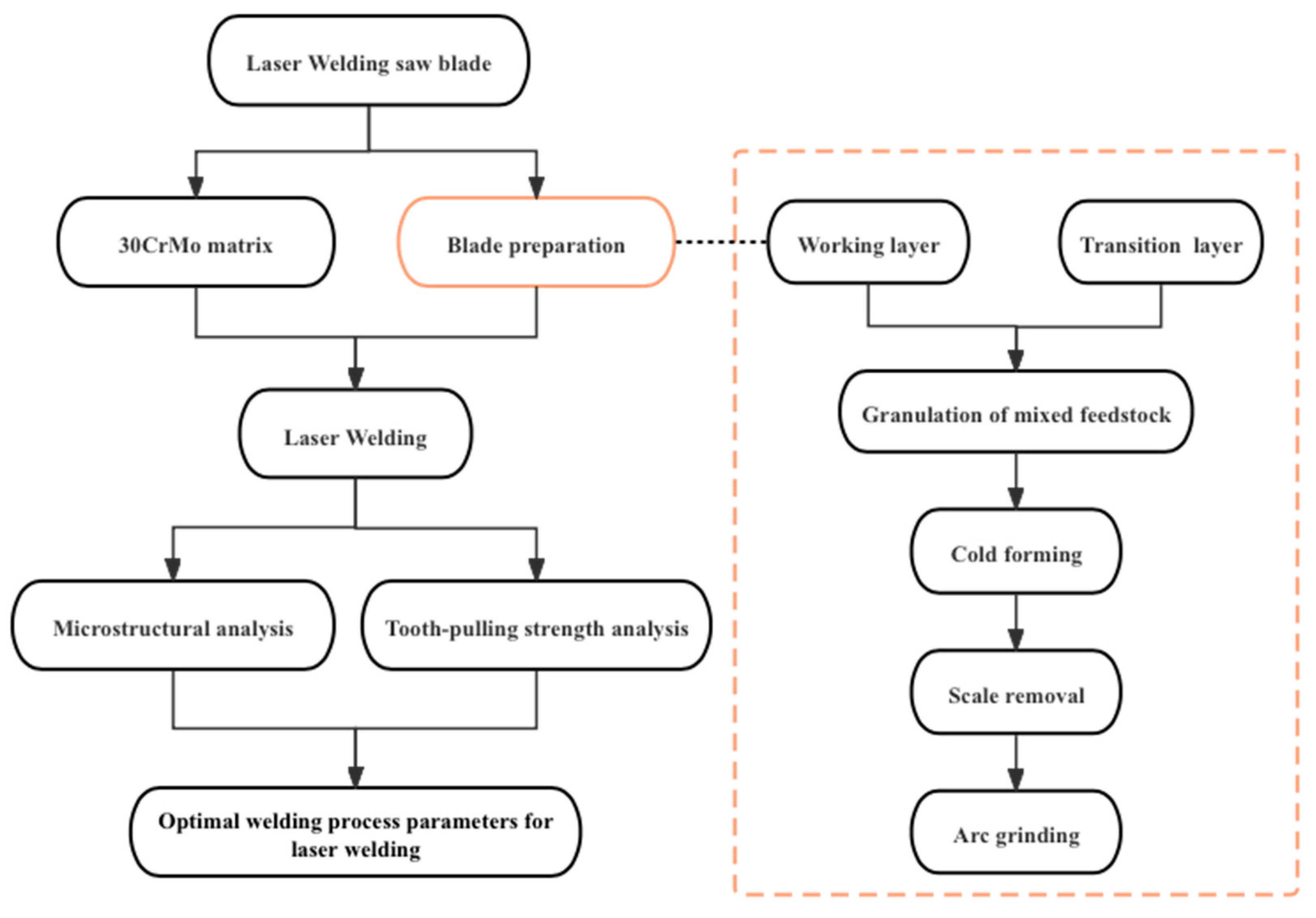
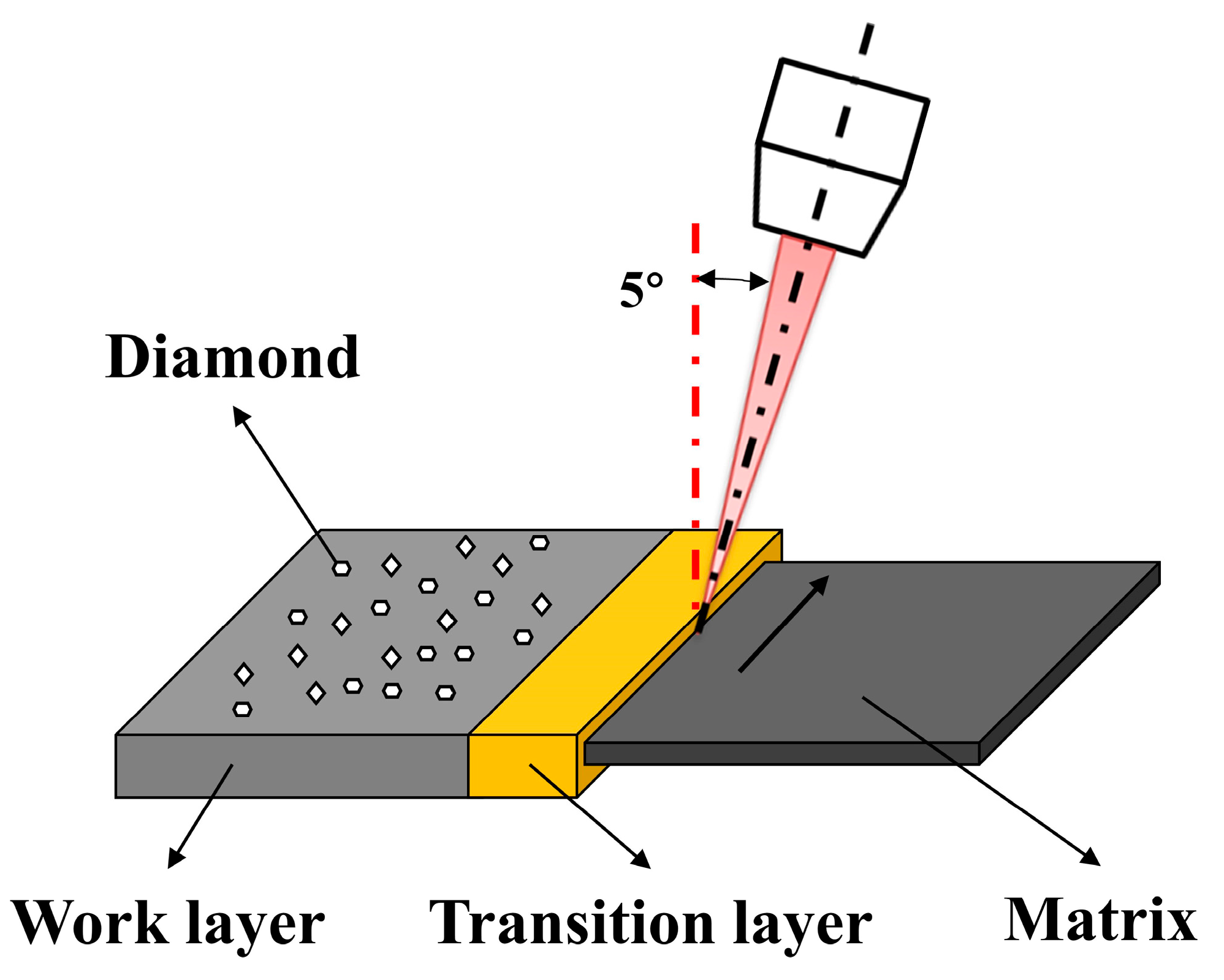
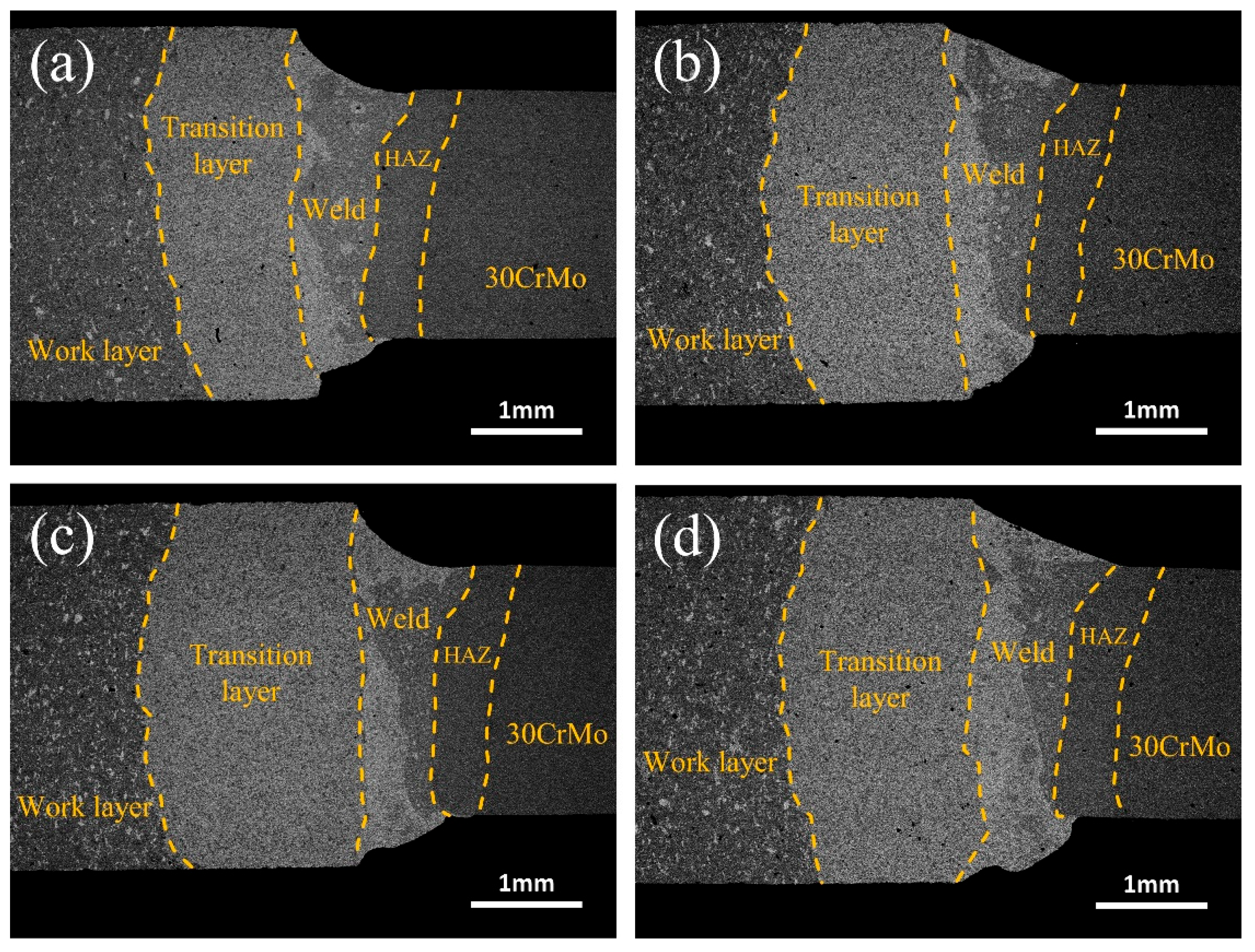


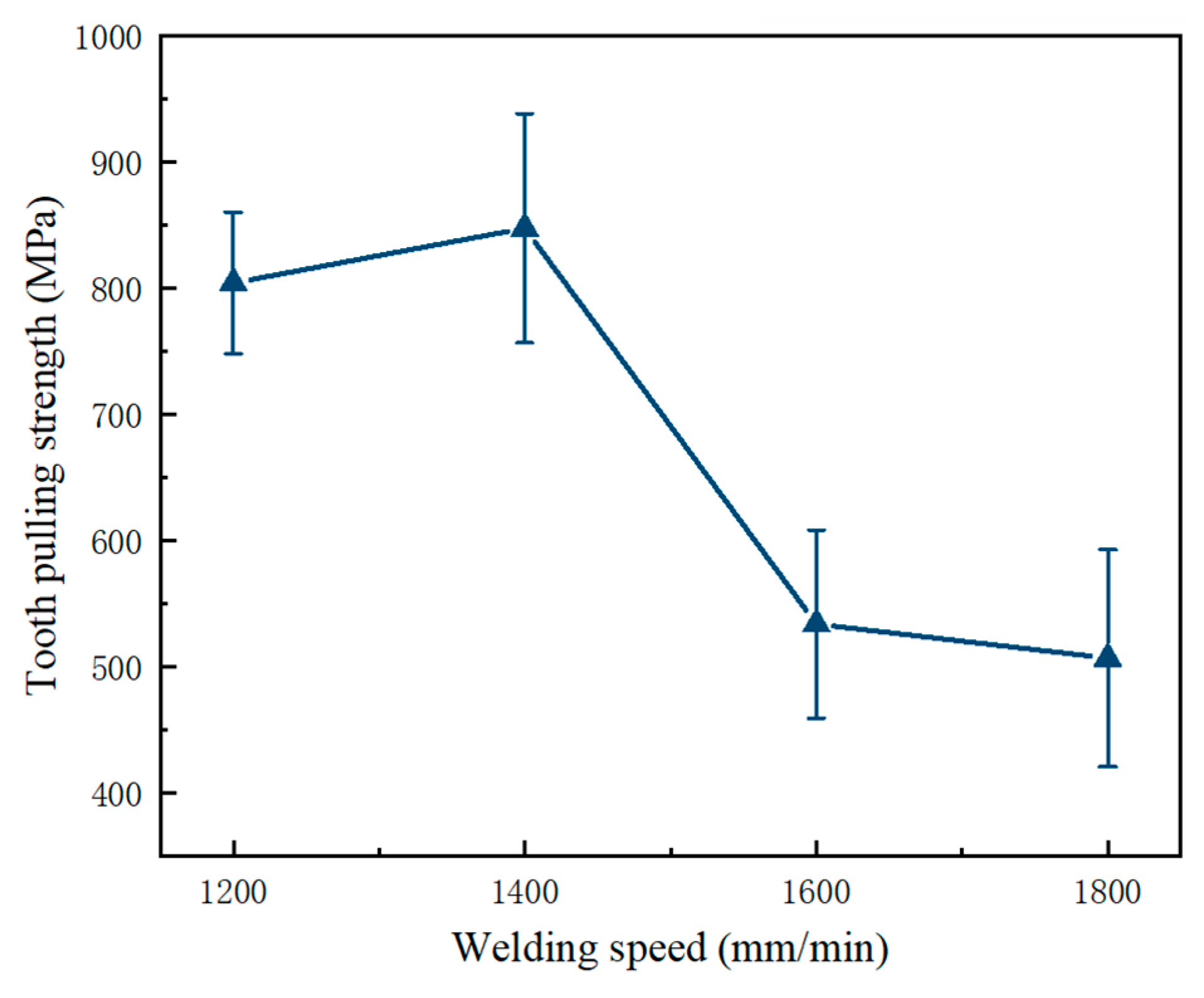

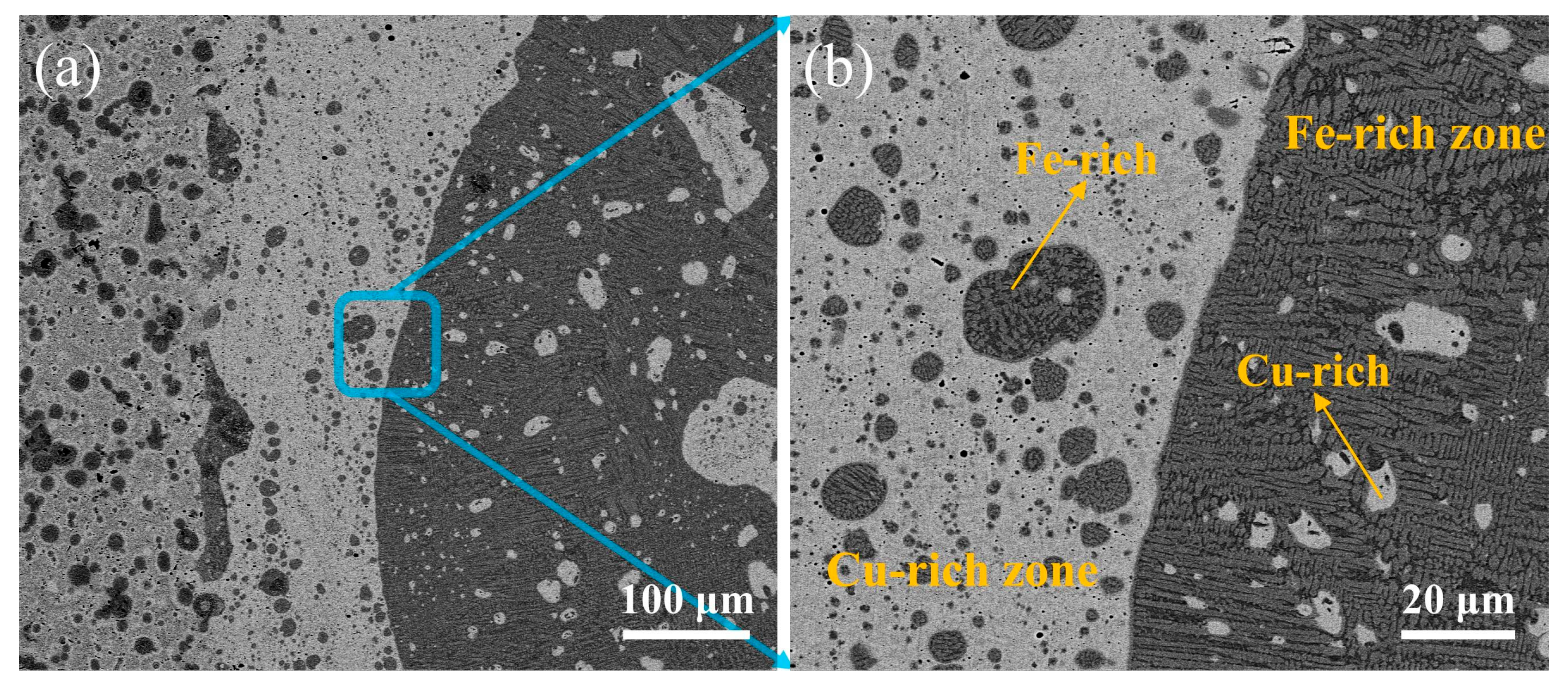
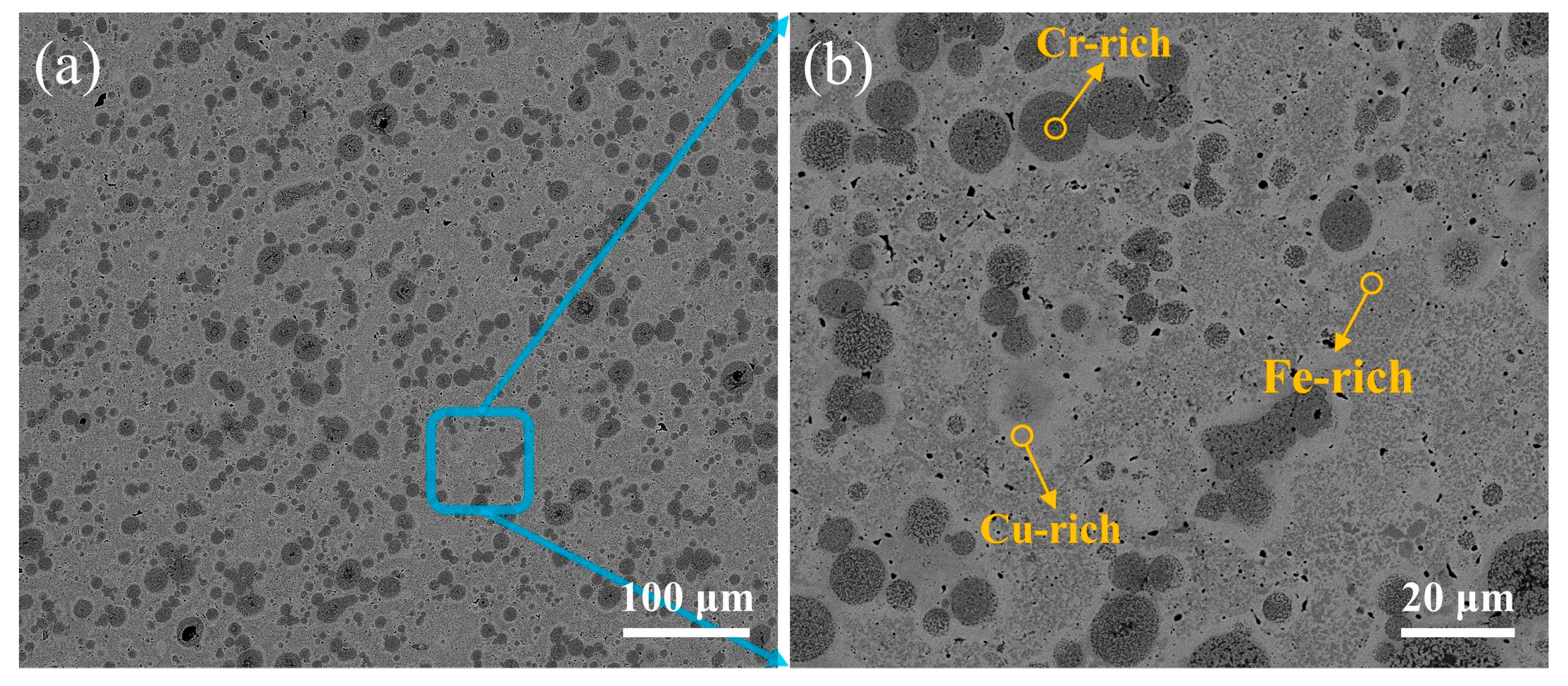
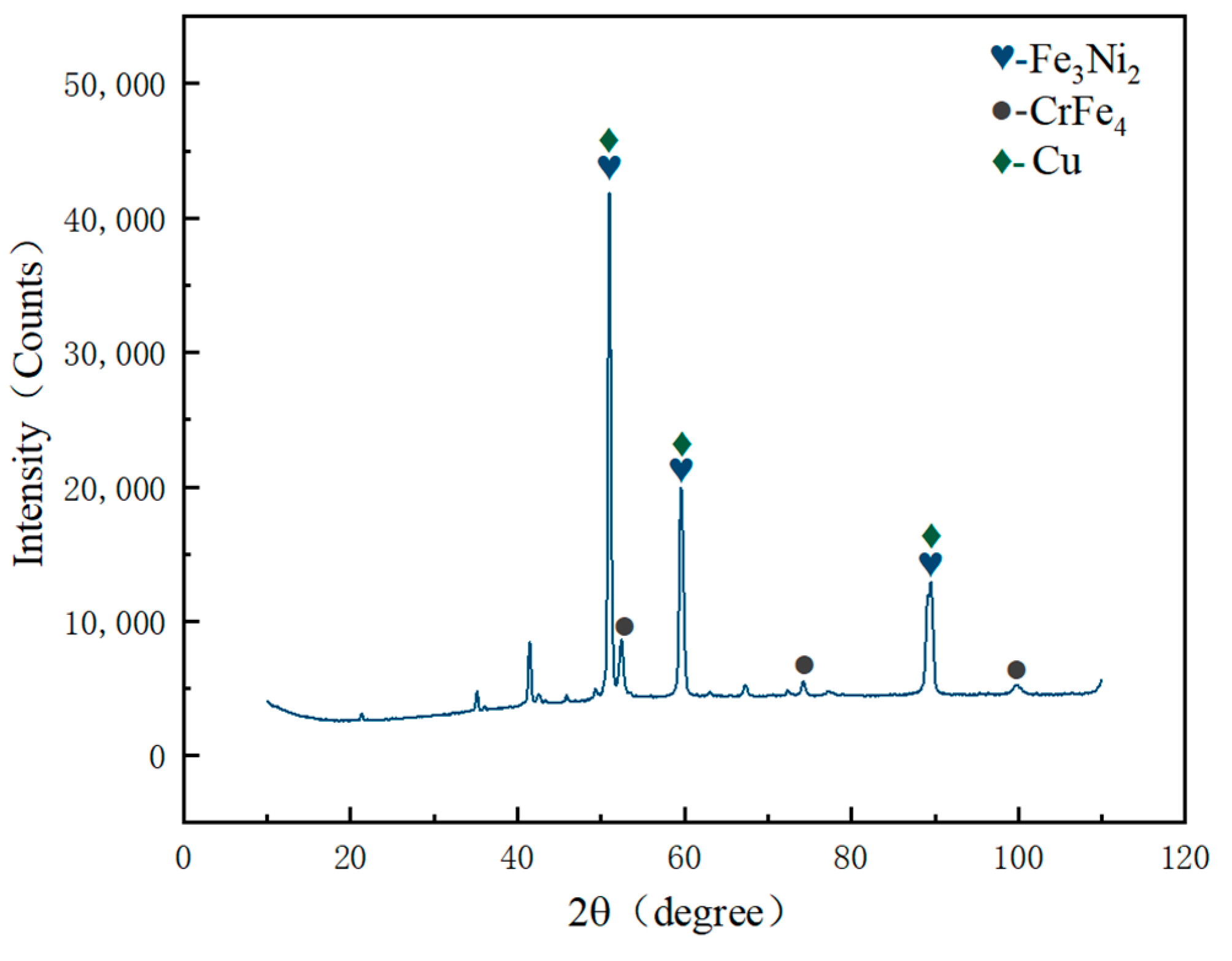

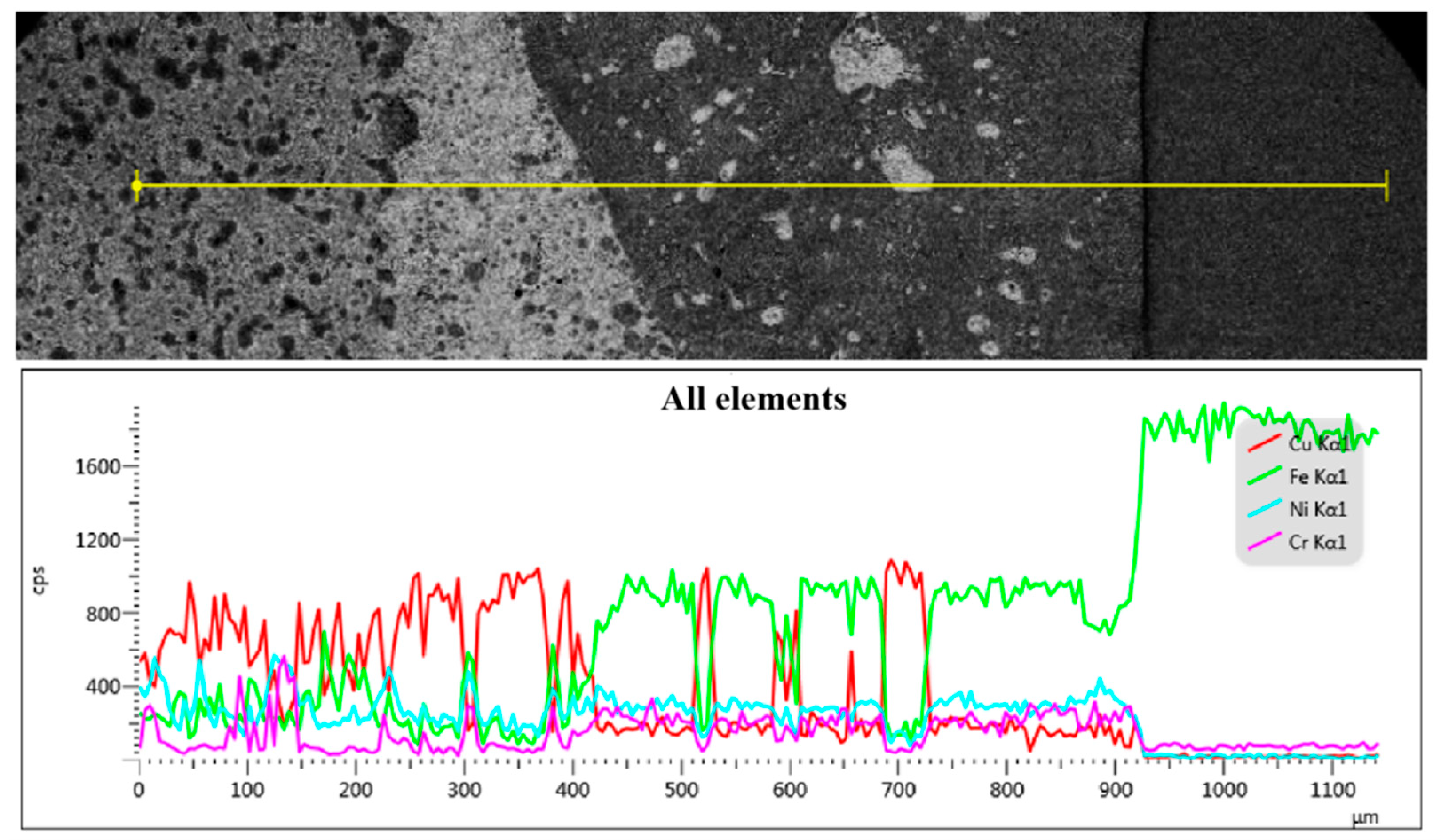



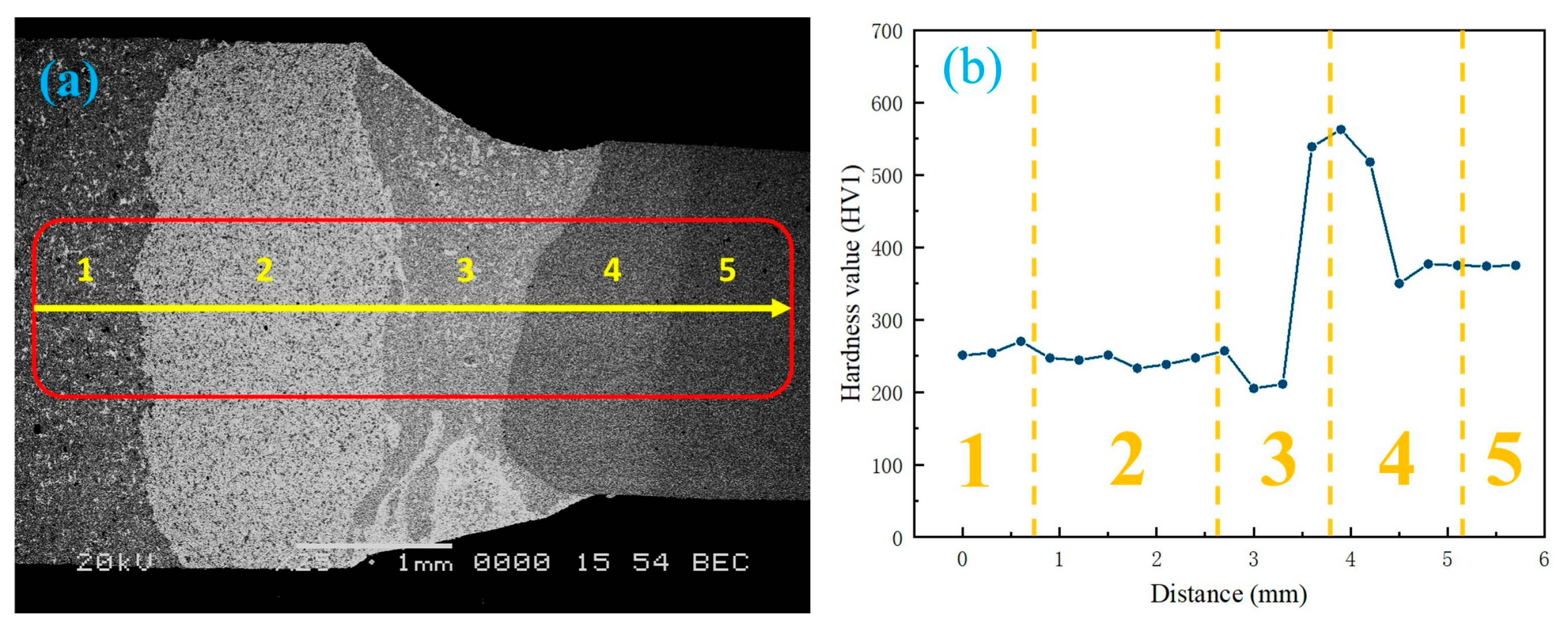
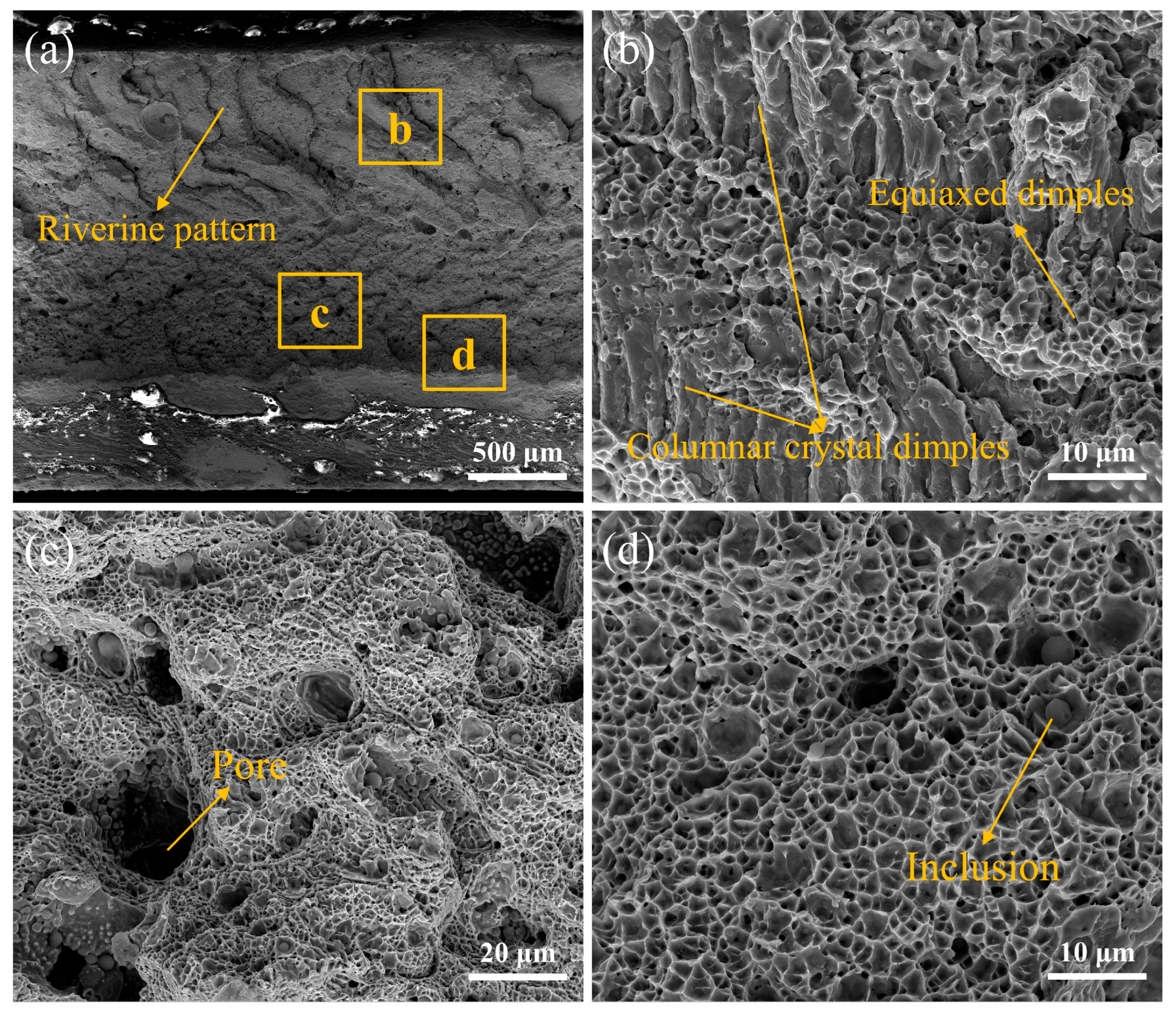
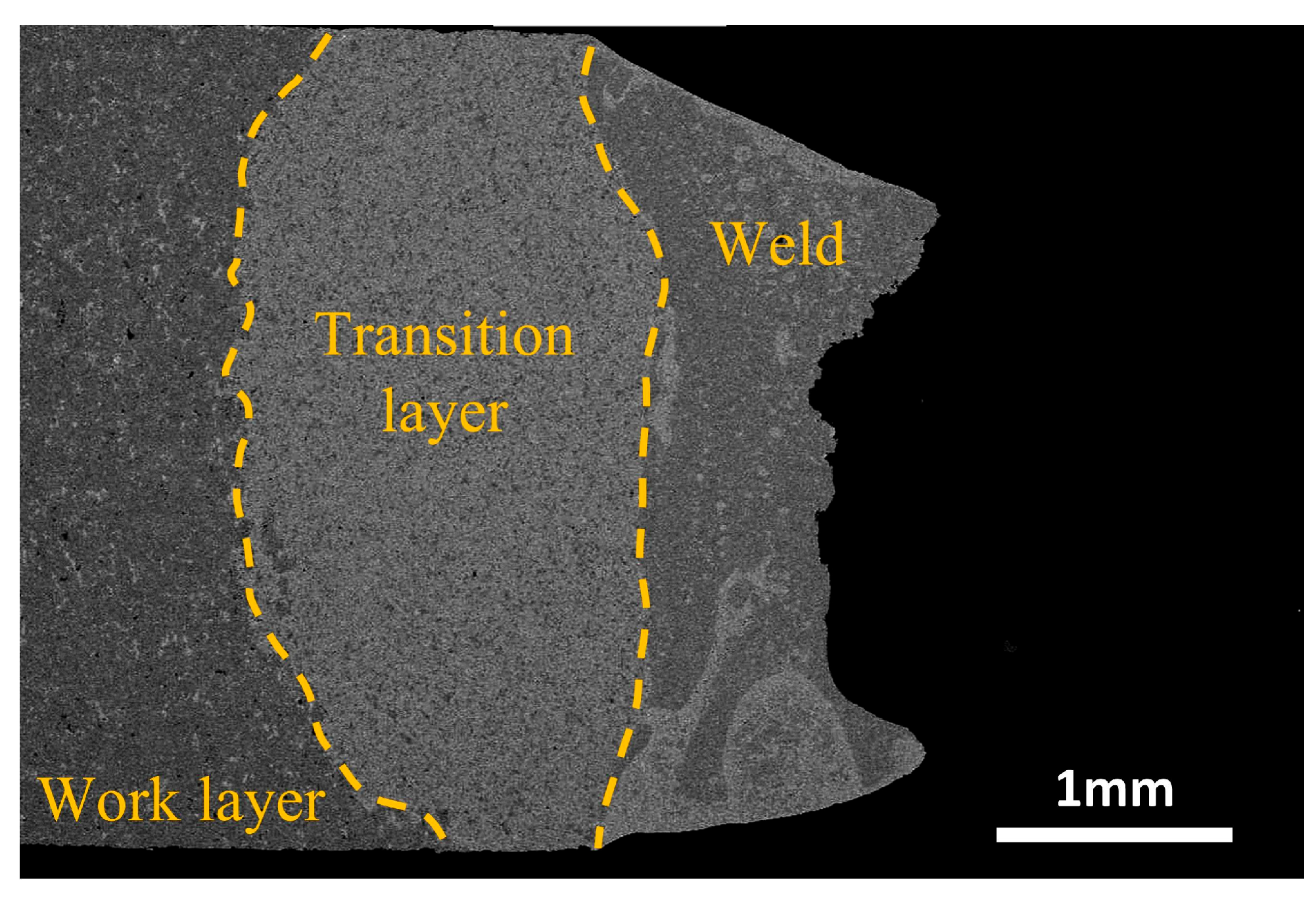
| Element | Cu | Ni | Fe | Co | Cr |
|---|---|---|---|---|---|
| wt% | 58.6 | 17.2 | 11.8 | 7.3 | 5.1 |
| Element | C | Si | Mn | P | Cr | Mo | Fe |
|---|---|---|---|---|---|---|---|
| wt% | 0.321 | 0.352 | 0.487 | 0.018 | 1.082 | 0.245 | Bal. |
| No. | 1# | 2# | 3# | 4# | 5# | 6# | 7# | 8# |
|---|---|---|---|---|---|---|---|---|
| Welding power (w) | 1600 | 1600 | 1600 | 1600 | 1400 | 1500 | 1600 | 1700 |
| Welding speed (mm/min) | 1200 | 1400 | 1600 | 1800 | 1400 | 1400 | 1400 | 1400 |
Disclaimer/Publisher’s Note: The statements, opinions and data contained in all publications are solely those of the individual author(s) and contributor(s) and not of MDPI and/or the editor(s). MDPI and/or the editor(s) disclaim responsibility for any injury to people or property resulting from any ideas, methods, instructions or products referred to in the content. |
© 2024 by the authors. Licensee MDPI, Basel, Switzerland. This article is an open access article distributed under the terms and conditions of the Creative Commons Attribution (CC BY) license (https://creativecommons.org/licenses/by/4.0/).
Share and Cite
Xu, Q.; Shu, C.; Liu, Y.; Kou, S.; Cao, R.; Cao, X.; Wu, J. Microstructural Characteristics and Properties of Laser-Welded Diamond Saw Blade with 30CrMo Steel. Materials 2024, 17, 1840. https://doi.org/10.3390/ma17081840
Xu Q, Shu C, Liu Y, Kou S, Cao R, Cao X, Wu J. Microstructural Characteristics and Properties of Laser-Welded Diamond Saw Blade with 30CrMo Steel. Materials. 2024; 17(8):1840. https://doi.org/10.3390/ma17081840
Chicago/Turabian StyleXu, Qiang, Chen Shu, Yibo Liu, Shengzhong Kou, Rui Cao, Xiaodie Cao, and Jiajun Wu. 2024. "Microstructural Characteristics and Properties of Laser-Welded Diamond Saw Blade with 30CrMo Steel" Materials 17, no. 8: 1840. https://doi.org/10.3390/ma17081840






